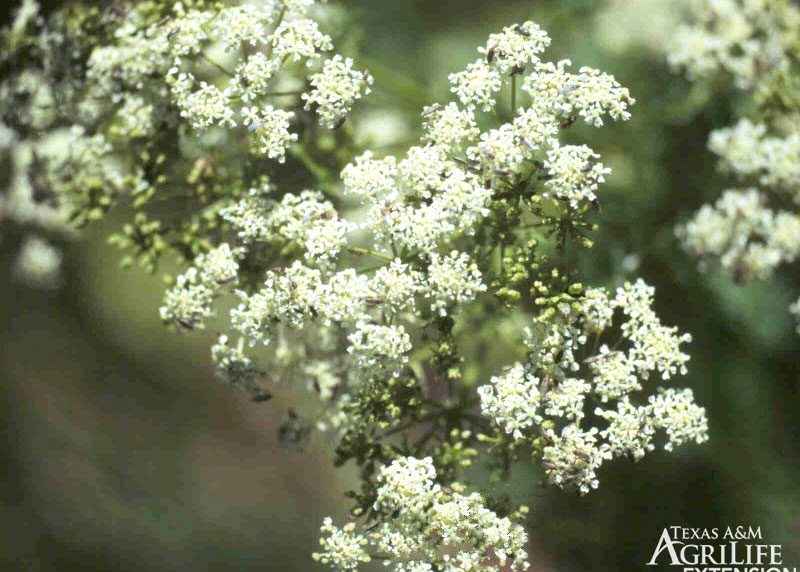Watch out for poison hemlock

My dad’s entire career at Texas A&M was spent dealing with plants that were poisonous, primarily to livestock, but also to humans. His list included bitterweed, mescal bean (Texas mountain laurel), coyotillo, African rue, and a long list of others. I’m sure he addressed poison hemlock, but I must admit that I don’t recall it.

As a result, it’s been interesting to watch the awakening of interest in poison hemlock as people have run across it in their outdoor encounters, even in their overgrown landscapes. Here are a few facts that might be helpful to you.
• Poison hemlock Conium maculatum
• Apiaceae (Parsley family)
• Naturalized over wide parts of the U.S. after being introduced from its Eurasian origins.
• Most common in South Texas but found in much of the rest of the state, especially in moist streambeds where it grows best in full sun. Often establishes in dense colonies.

• Leaves are three-times divided, resembling those of ferns, carrots, or parsley. Stems are hollow and can grow to 4 to 10 ft. tall.
• Small white flowers are arranged in umbrella-shaped clusters, late spring into early summer.
• Plant parts contain piperidine alkaloids, notably conine. Contact with stems and leaves causes worst reactions in livestock and humans.
• Toxic effects include severe skin inflammation, muscle tremors, partial paralysis, slurring of speech, respiratory failure, slowed heart rate, coma, and death. Ingesting of only 4-8 leaves can cause death in adults in only a few hours.

• Management techniques: Do not touch any part of the plant, and do not burn the cut stems. Do not feed it to livestock. Dig and remove the rhizomes carefully, again taking care not to touch them. If hand-cutting or hand-pulling are required, wear heavy gloves, and take a hot shower immediately after.
• Broadleafed weedkiller herbicides (containing 2,4-D) will kill poison hemlock without the need to do any cutting or pulling. Read and follow label directions to avoid damage to your desirable plants.
If you experience any of the serious symptoms of poisoning, go to a local emergency room immediately.
